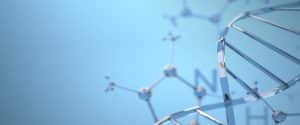CRISPR/Cas9 Prime Editing is a novel gene editing technique that utilizes a modified Cas9 protein to introduce mutations in the genome with a higher degree of safety and complexity. This technique represents an evolution in the CRISPR/Cas9 system that enables researchers to more safely create complex genetic changes than using previous genome editing methods. In this article, we will explore the mechanisms of CRISPR/Cas9 Prime Editing, its advantages and disadvantages over other gene editing methods, and its potential applications in biotechnology and medicine.
Mechanisms of CRISPR/Cas9 Prime Editing:
CRISPR/Cas9 Prime Editing employs two main components to drive its function. The first element is a modified version of the Cas9 protein that has been altered to remove its ability to fully cleave double-stranded DNA, but instead cuts just one strand, leaving a nick in the DNA. It is therefore referred to as nickase-Cas9 (nCas9). In addition to this, the nCas9 protein is fused on one end to a reverse transcriptase enzyme. The second key element is comprised of a modified guide RNA (gRNA) that consists of the traditional CRISPR/TRACR sequences responsible for targeting a specific DNA site for modification but also includes a unique stretch of DNA sequence intended to be incorporated at the intended target site. The entire complex is directed by the gRNA to the target site in the genome where the nCas9 derived nick serves as a primer for the reverse transcriptase enzyme to copy the new DNA sequence (carried on the gRNA) into the genome using the endogenous cellular machinery.
Graphical depiction of the nCas9 fused with a reverse transcriptase enzyme and a prime editing guide RNA that carries the sequence responsible for Cas9 targeting as well as the DNA intended as a template for repair.
The precise location and nature of the desired mutation can be controlled by modifying the gRNA sequence. This enables researchers to make highly specific mutations, such as single nucleotide substitutions in a highly controlled manner. This technique also has the potential to introduce complex genetic changes, where multiple substitutions are required within a stretch of nucleotides.
Advantages of CRISPR/Cas9 Prime Editing:
Compared to other gene editing techniques, such as traditional CRISPR/Cas9 base editing using a wild-type Cas9, Prime Editing has certain advantages. The primary advantage of Prime Editing is in its use in therapeutic settings where it is considered safer than traditional approaches. By virtue of the fact it uses a nickase version of Cas9, it avoids making a double-strand break, which can be more prone to unintended misrepair. Secondly, it allows for the efficient introduction of highly complex genetic changes that are often more difficult to achieve with other approaches.
Applications of CRISPR/Cas9 Prime Editing:
Biotechnology and Medicine:
- Correcting genetic mutations: Prime Editing can introduce specific nucleotide substitutions or insert new genes into cells with high efficiency and minimal off-target effects, making it a safer alternative to traditional gene-editing methods like CRISPR/Cas9.
- Creating new disease models: Prime Editing can introduce specific genetic mutations into animal models with high efficiency and accuracy, allowing researchers to study the underlying mechanisms of diseases and develop new treatments.
- Example: Prime Editing could be used to introduce the same genetic mutations found in human diseases like Alzheimer’s into animal models like mice, allowing researchers to study the disease in more detail and test potential treatments.
Synthetic Biology:
- Engineering cells and organisms: Prime Editing can introduce precise genetic changes into cells and organisms, allowing researchers to engineer them with specific functions like the production of useful chemicals or the degradation of environmental pollutants.
- Example: Prime Editing could be used to engineer algae to produce biofuels more efficiently, potentially leading to the development of more sustainable energy sources.
- Developing genetic tools: Prime Editing can create new genetic tools for basic research, such as tools for labelling specific genes or studying gene expression visually.
- Example: Prime Editing could be used to tag proteins with fluorescent markers that can be used to visualize specific genes in live cells, allowing researchers to study cellular processes in real-time.
Limitations:
Although Prime Editing is a significant advancement in base editing technology, it is not without limitations. The first limitation is the size of the edit. Prime editing can generally only make edits that are within a certain size range, typically up to 20 base pairs, which is much smaller than the traditional CRISPR/Cas9 system’s capability to insert or delete larger sequences more efficiently. Additionally, Prime Editing can be less efficient than traditional CRISPR/Cas9 base editing methods for certain applications (like knockouts), which can limit its application in some scenarios. Finally, the delivery of the components required for prime editing to the appropriate cells in a patient remains a significant challenge. Researchers are continuing to develop new delivery methods to overcome these limitations and unlock the full potential of prime editing for the treatment of genetic diseases.
Conclusion:
CRISPR/Cas9 Prime Editing is a powerful new gene editing technique that enables researchers to make precise and complex genetic changes with increased safety from off-target events. Its potential applications in biotechnology and medicine are vast and could revolutionize the way we study and treat genetic diseases.

